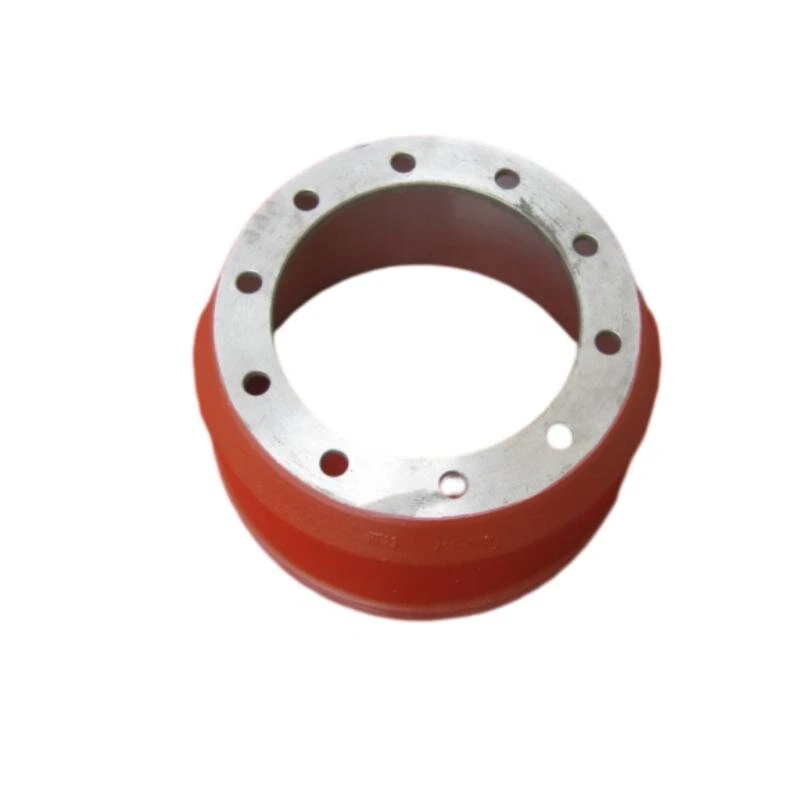जानेवारी . 01, 2025 09:47 Back to list
Understanding Brake Drums and Shoes for Optimal Vehicle Performance and Safety
Understanding Brake Drums and Shoes
Brakes are a critical component of any vehicle, ensuring safety and control when driving. Among the various types of brake systems, drum brakes are still prevalent, especially in older vehicles and some modern ones, particularly in the rear wheel application. This article will delve into the details of brake drums and shoes, including their functions, construction, maintenance, and common issues.
Structure and Function
The brake drum is a cylindrical component, usually made from cast iron or aluminum, that rotates along with the wheel. When the brake pedal is pressed, the brake shoes—curved pieces typically lined with friction material—expand against the interior surface of the brake drum, creating friction that slows the vehicle down. This friction is crucial because it converts kinetic energy into thermal energy, allowing the vehicle to decelerate.
Brake drums generally have a smooth interior surface and can come in different diameters depending on the vehicle's design. The force with which the shoes press against the drum is controlled by hydraulic pressure generated through the brake lines when the driver presses the brake pedal. This simplicity makes the drum brake system relatively easy and cost-effective to manufacture and repair.
Components of Brake Drums and Shoes
1. Brake Drum The main component, which rotates with the wheel. It must withstand significant heat and stress, making durable materials essential for performance and longevity. 2. Brake Shoes These are arched steel components that carry friction material on their surface. When the brake is applied, they pivot and press against the inside of the drum. 3. Hold-down Springs These springs are responsible for keeping the brake shoes in the correct position within the drum, ensuring they retract correctly when the brake is released.
4. Return Springs Located behind the brake shoes, these springs help pull the shoes back to their original position, ready for the next braking action.
5. Adjusters Many drum brake systems have an adjusting mechanism to compensate for wear. The friction material on the brake shoes will wear down over time, and the adjusters help maintain the optimal distance between the shoes and the brake drum.
Maintenance and Inspection
Regular maintenance of drum brakes is essential for safe vehicle operation. Here are a few key maintenance tips
1. Inspecting Brake Shoes Brake shoes should be inspected regularly for wear. It is essential to replace the shoes before they wear down to the metal, as this can damage the brake drum and lead to more costly repairs.
brake drums and shoes

2. Check the Brake Drum The inside surface of the drum should be smooth and free of deep grooves or scoring. If the surface is damaged, it may need to be resurfaced or replaced.
3. Adjusting Mechanisms Ensure that the adjusting mechanisms are functioning correctly. If they are stuck or not engaging as they should, they can lead to uneven braking and increased wear.
4. Spring Condition All springs should be checked for wear or damage, as their failure can lead to improper function and safety issues.
5. Keep It Clean Dirt and debris can accumulate in the drum brake assembly, causing noise and reducing performance. Regular cleaning and lubrication of moving parts is advisable.
Common Issues
Brake drums and shoes can face several issues during their operational life. Common problems include
1. Overheating Excessive braking can lead to overheating of the drums, resulting in brake fade and reduced performance.
2. Uneven Wear This can occur if the brake system is not properly maintained or if components are misaligned, causing one shoe to wear out more quickly than the other.
3. Noises Squeaking or grinding noises when braking can indicate worn shoes or debris caught within the drum assembly.
4. Drum and Shoe Corrosion Exposure to moisture can cause rust and corrosion, leading to deterioration of the materials and reducing efficiency.
Conclusion
Understanding brake drums and shoes is vital for vehicle maintenance and safety. Regular inspections, along with timely replacements and adjustments, will ensure that your braking system remains effective. By keeping these components in good condition, you’ll not only enhance your vehicle’s performance but also ensure a safer driving experience on the road.
-
Premium Iveco Brake Drum - Durable & Reliable Performance
NewsAug.05,2025
-
High-Performance Nissan Brake Drum | Durable Braking
NewsAug.03,2025
-
FRUEHAUF AI Trailers with GPT-4 Turbo Innovation
NewsAug.02,2025
-
TATRA: Supercharge AI with GPT-4 Turbo Technology
NewsAug.01,2025
-
2014 Mitsubishi Mirage Rear Brake Drums | Durable & Precise
NewsJul.31,2025
-
High-Quality Trailers for Towing Needs | Shop Now
NewsJul.25,2025
